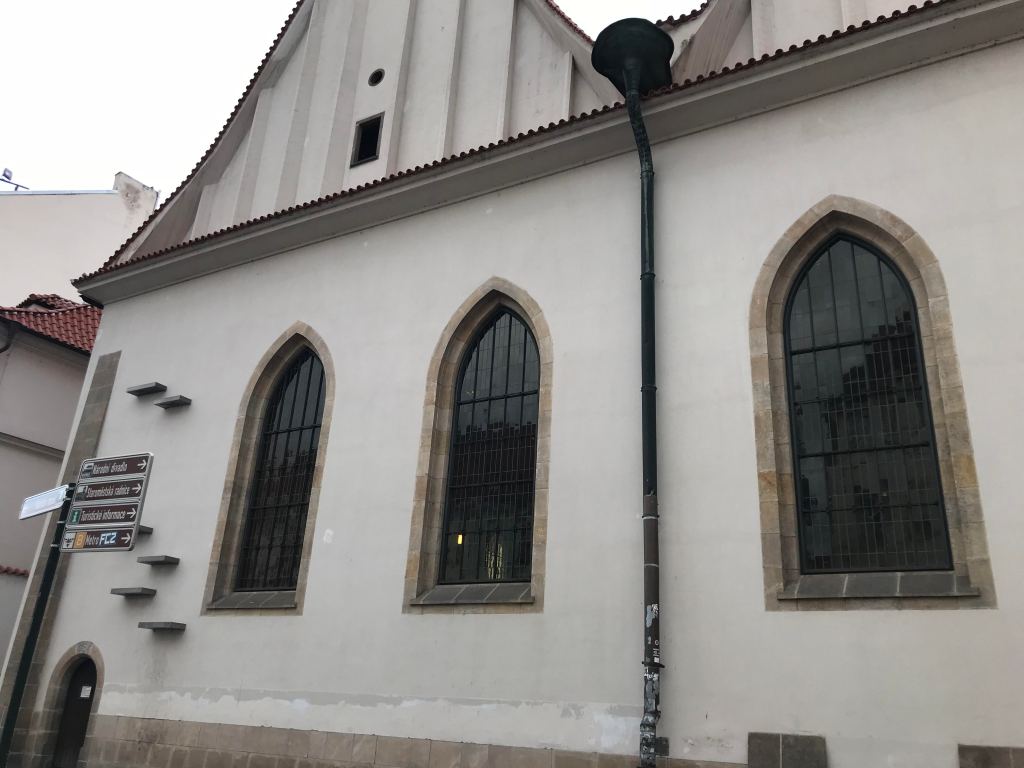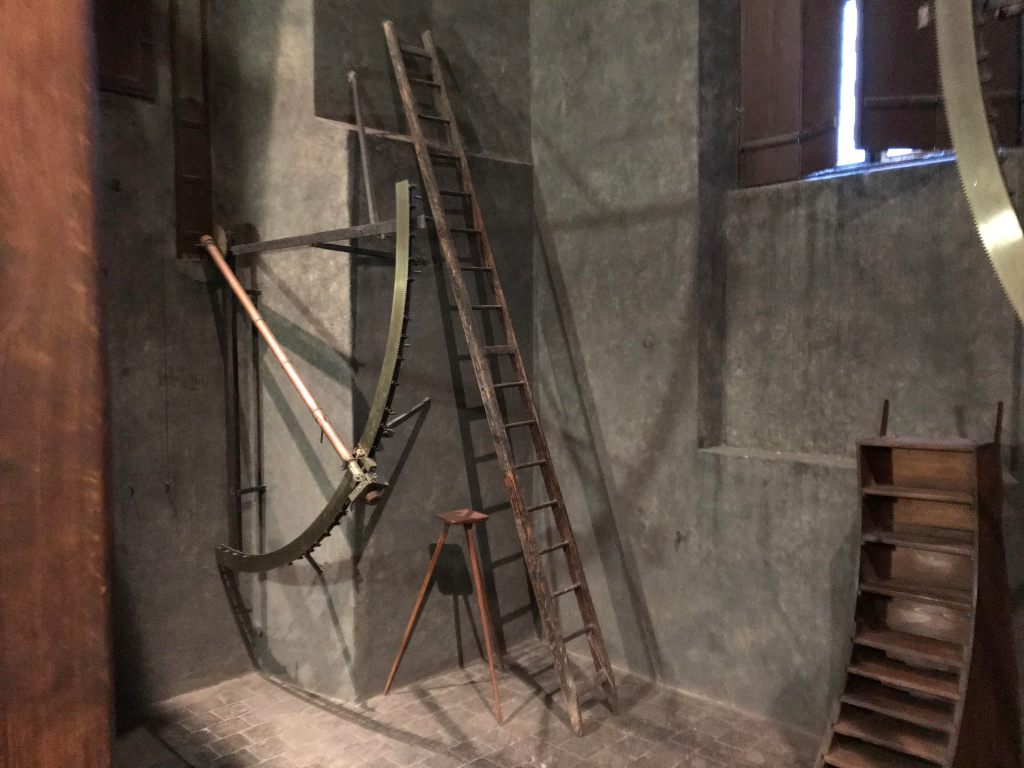Well, our first free day has come and gone and we are back at the exploration and adventure of this great city of Prague. Today’s focus appears to have been on exploring more churches and religious sites.

Our journey began today by returning to the Charles Bridge, one of the most well-known landmarks in Prague. We spent time here viewing the various statues located on the bridge. We focused heavily on the statues of Charles IV and John of Nepomuk. These two statues stand out because of who they represent. Charles IV, even though he was a foreign ruler, is one of the most famous kings this country has known. He expanded the city, created New Town (Square), and is known for many pieces of local architecture (Charles Bridge, Charles University, etc.) John of Nepomuk was a religious leader who was executed for reasons that have been speculated about for centuries. The two popular theories are: 1) he confirmed a rival religious leader the king (Wenceslas IV) did not agree with or 2) he was a confessor for Wenceslas’ queen and he did not want to reveal her secrets to the king. He was thrown into the Vltava River, where he drowned.

Bethlehem Chapel (exterior) 
Jan Hus artwork 
Portrait of Jan Zizka (notice he has no eyes left)
Next we traveled back to Prague’s Old Town to view the famous Bethlehem Chapel. This location was established in the late-14th century as a place for worship in the Czech language. The fame for this chapel comes from the time spent by Jan Hus at the location as a preacher. For those who do not know, Jan Hus was a famous, pre-protestant religious leader who opposed the views and actions of the Catholic Church during the late-13th and early 14th centuries. This was a regular place for Hus to preach and when we was executed in 1415, the location was used heavily by the Hussites. The Hussites were the followers of Hus who, following his execution, began a reformation (nearly a century before Martin Luther) to allow protestant forms of Christianity to take hold over the Catholic’s reign. The Hussites eventually lost their hold when the Habsburgs took over Bohemia in 1525. The location was turned Catholic by this time. The chapel was eventually destroyed by the 17th or 18th century. Though it was completely rebuilt during the communist reign of Czechoslovakia in the mid-20th century. During this time, Jan Hus was used an icon for justice and change by communists. If you visit the location now, you will see painting of Hus on the walls along with music associated with his followers. Jan Hus remains a legendary figure in the Czech Republic to this day. Ask anyone who has lived here a long time and they will probably agree.

Church of St. Martin in the Wall 
Church of St. Gallus
After we left Bethlehem Chapel, we proceeded to go on a walking tour around the area. This walking tour had us viewing the various other churches or chapels in the area. Sadly, we could not go inside any of them due to various constraints. The issues usually revolved around the locations not being open or there was a service taking place. However, we did get the view the some more amazing architecture. The architecture we saw today was mostly baroque. Some locations we viewed were the Church of St. Gallus and the Church of St. Martin in the Wall. Both of which were baroque in style because of the Habsburgs obsession with the style. The locations had gold altars everywhere, statues with detailed designs, onion shaped domes, etc. Some these locations also have some odd legends that go with them. My favorite from today the story of child statue aking faces on top of the Church of St. Martin in the Wall. As the story goes, the child was either 1)throwing food from atop the building and a priest came and told him to stop but he turned to stone by mocking the priest or 2) the child’s mother saw the child playing and told him to come down and he proceeded to make faces at her until he turned to stone. Either story sounds like some intense punishment considering the child gets turned to stone.

Our final destination of the day was a revisit to Jan Jus memorial in the Old Town Square. This memorial was built in the early-20th century to commemorate the 500th anniversary of Hus’ death. This memorial encompasses many aspects of the Hussite’s views. The scene depicted on the statue is Hus’ burning at the stake with his followers standing behind him. One of his followers was holding a chalice, the symbol of the Hussites. Another character was a woman holding a child, which may have been symbolizing the birth of a new age following Hus’ death. The last area of the statue depicted the Czech people suffering, possibly under the rule of the Habsburgs who eventually take power.
I feel like during the 5 days we have been here, we have seen nothing but churches or castles. What does this say about the Czech people and their beliefs? The Czech have an interesting history with religion in regards to how they practice and believe the Christian views. For most of their history, the Czech were Catholic (Middle Ages Habsburg era), but every time a protestant uprising has occurred. it has been highly successful then toppled later. The Hussite Wars (1419-34) and Protestant Uprising (1618-1620) are the 2 most common examples used when discussing Protestantism in Prague. Both times, large groups stood up and fought back the Catholics. Sadly though, their efforts used were temporary. Religion overall though has been a major source of Czech identity because of the rule that a monarch’s people should follow the same religion as them. Religion has a way of bringing people together through a sense of community and promise of paradise.

Astronomical Tower Equip 
Astronomical Tower Telescope 
Top of Klementium looking very ominous
After we were done for the day, I made took a detour before heading back to hotel so that I could view the National Library. This is located in a large complex that I mentioned yesterday called the Klementium. This houses the Mirror Chapel, the National Library, an astronomical tower, as well as many other major sites. The 3 mentioned above are the ones I have seen thus far. I viewed the Mirror Chapel yesterday on my day off when going to see a classical music concert (see previous post for details). The main goal for today was the National Library and Astronomical Tower. These sites did not disappoint. Inside the National Library is an array of old and new documents dating back centuries. The library is divided into 2 areas: the Baroque Library (old documents) and the public library (modern documents). I wish I could have taken pictures, but sadly that was prohibited due to the sensitive nature of the items stored there. The Astronomical Tower was no less amazing than the library. It held assortment of astronomical globes and equipment taking back decades and centuries. The view from the top of the tower was amazing and thankfully I was able to obtain pictures inside and outside. The view was especially amazing when a short snow storm blew through giving the city an ominous fog.
Today was not as heavy in terms of material to take in, but I would say it was still amazing as always. We are getting down to nitty-gritty of Czech culture and beliefs. This is what I came here to understand better. The architecture is only part of the story.
